The Famous Calandra Peach is Still in Season
Friday, October 27, 2023
I have always loved peaches, but they haven’t really been one of my favourite fruits while living in Spain. I think because most of the peaches I have tried in supermarkets lacked flavour and aroma. I remember as a child eating peaches that were full of flavour, far more than they do today. That was at least, until I tasted the Calanda Peaches.
There are peaches and then there are peaches. These are something special.
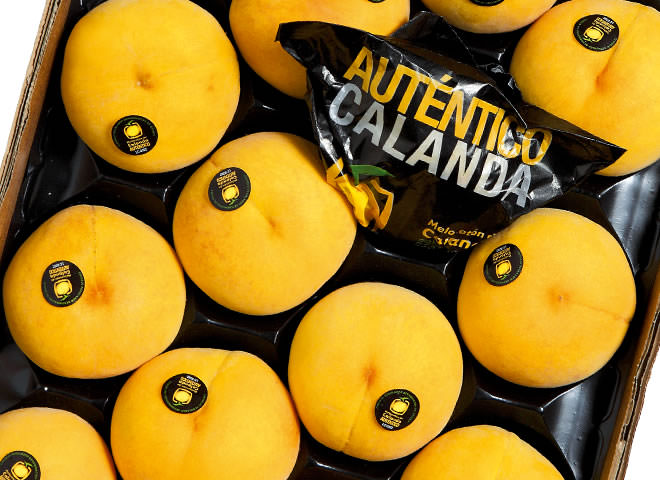
In order to guarantee their properties, the genuine Calanda peaches are pampered to an extent that seems almost silly. The producers use what is called a thinning technique to make sure the quality is supreme. This means removing 70% of the existing fruits on the tree in order to leave a distance of 20 cm between each fruit. This means the fruits are better nourished. This original cultivation technique offers us a more bulky and fleshy fruit.
To give you an idea, If you had in your hands is a real Calanda peach, its diameter would be a minimum of 73 mm.
These peaches with Calanda Peach Certificate of Origin (D.O.) have achieved a certain level of prestige in the fruit market, primarily because of its excellent flavour and sweetness and also due to their unusually large size.
Each peach carries a genuine black label, which guarantees a minimum sweetness of 12º Brix. This is the minimum quantity for peaches to give off their attractive odour. Something that is missing from almost all supermarket peaches these days.
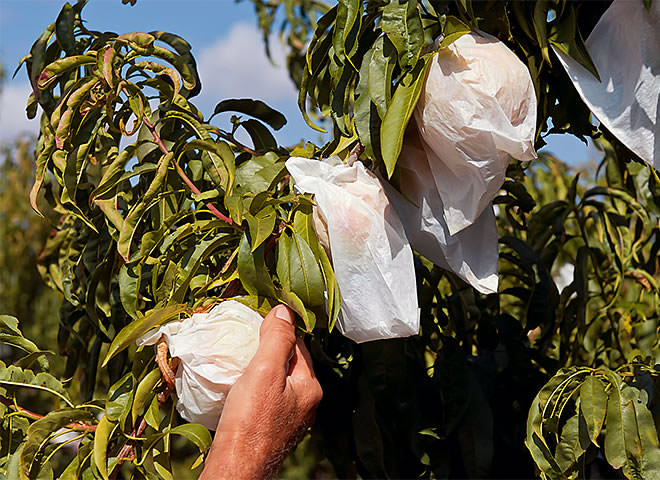 What’s more the attention to detail is very important. Every peach of the D.O. Calanda is put in a bag one by one in the tree itself during the last 2 months of growth. Thanks to this step the peach ripens inside a protective bag guaranteeing its pureness, as it doesn’t make contact with any kind of phytosanitary product or external agents. What’s more the attention to detail is very important. Every peach of the D.O. Calanda is put in a bag one by one in the tree itself during the last 2 months of growth. Thanks to this step the peach ripens inside a protective bag guaranteeing its pureness, as it doesn’t make contact with any kind of phytosanitary product or external agents.
The cultivation area of “Calanda Peach” is mainly located in Lower Aragon region. This D.O. is located in the southeast of the Ebro river valley, between Teruel and Zaragoza provinces and it is made up of 45 towns. The season for genuine D.O. Calanda peach covers from the middle of September to the end of October, depending on the climate. Before this time, you must be wary as it is very unlikely that they will be authentic, always check for the black sticker. However, we are now at the end of October so you are still in luck, especially as the season has extended due to the hot weather.
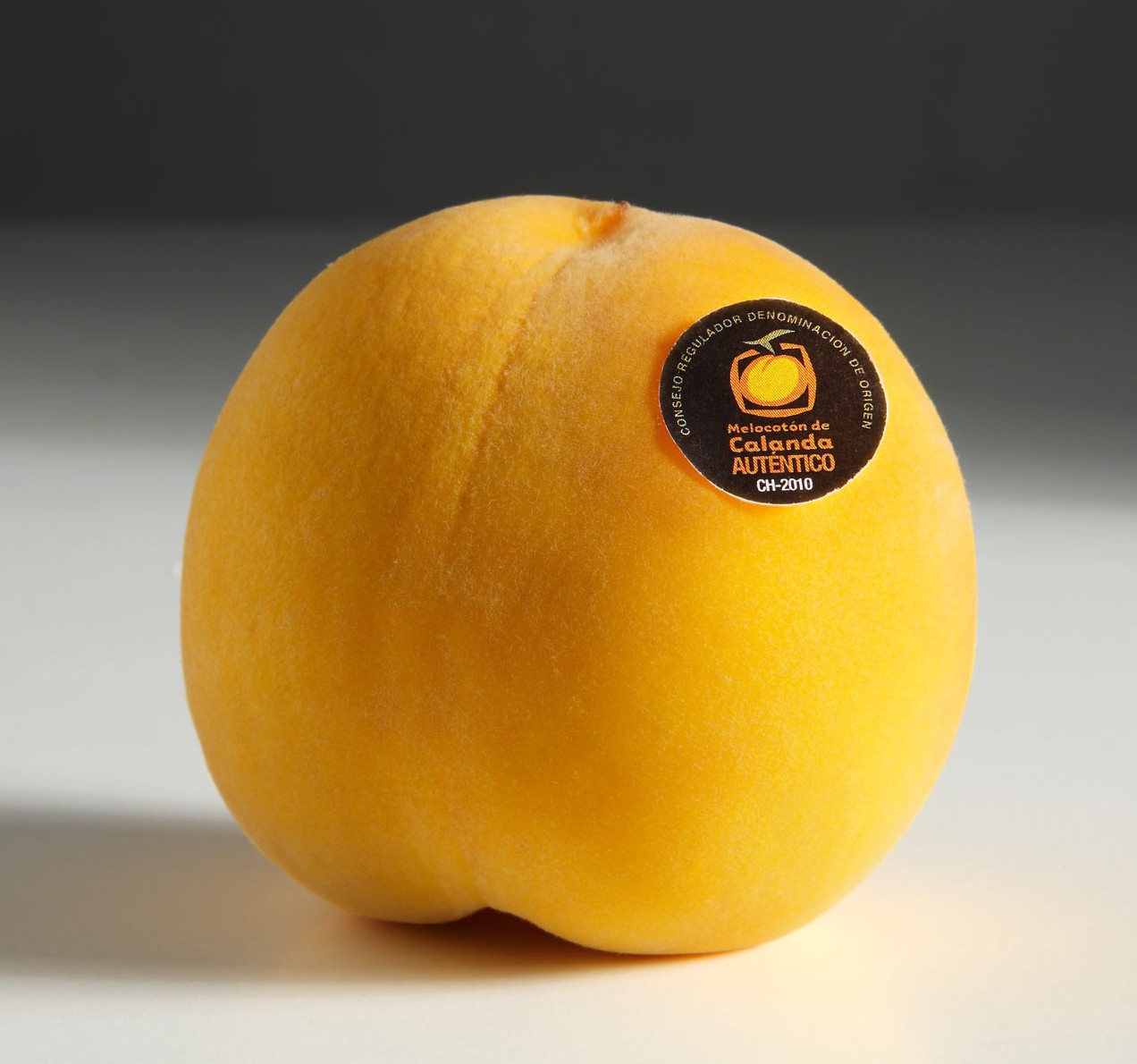
The tradition of cultivating peaches across the Aragon region goes back hundreds of years. There are documents which reference the production of Calanda Peaches from the Middle Ages and in 1895, the botanist J. Pardo Sastrón gave a detailed description of the production process for this unique fruit. The increase in production didn’t develop until the fifties.
So if you fancy tasting a truly juicy, sweet and aromatic peach, don’t forget the Calanda peach the next time you pass by a fruit market.
 2
Like
Published at 3:47 PM Comments (0)
2
Like
Published at 3:47 PM Comments (0)
Storing Olive Oil
Friday, October 20, 2023
In summer due to the high temperatures and hours of light, the storage of your olive oil is even more important. When olive oil is exposed to oxygen, light, and heat, it is subject to oxidation and may become rancid.(Go to article on how to detect oils gone bad). However proper storage can prevent this. Depending on the quality of the oil and on how it was made, extra virgin olive oil in a sealed bottle may last from 3 months to 2 years depending on the variety and the if it was filtered or not. Unfiltered olive oils should be consumed very quickly, in a question of weeks and storage of these oild is even more important.
As soon as you open the bottle, the oxidation process accelerates and the oil will degrade fairly rapidly. Make sure you keep your oil in a closed bottle, in a dark container or closet, away from sources of heat like your stove. You do not have to refrigerate it, although refrigeration will not hurt the oil. Buying your oil in bulk is a great way to save money, as good oil can be rather expensive. If you do so, the best way to preserve it is to keep it in a stainless steel container, called a fusti. Fusti are an excellent way to preserve olive oil. For even better preservation, you can top your fusti off with inert gas from a small spray can. Inert gas prevents oxidation by blanketing the surface of the oil and displacing the oxygen, unlike vacuum systems. It is completely safe and will not affect the flavour of olive oil. "Private Preserve" is the original inert gas, and has been used by wine and olive oil lovers worldwide more many years.
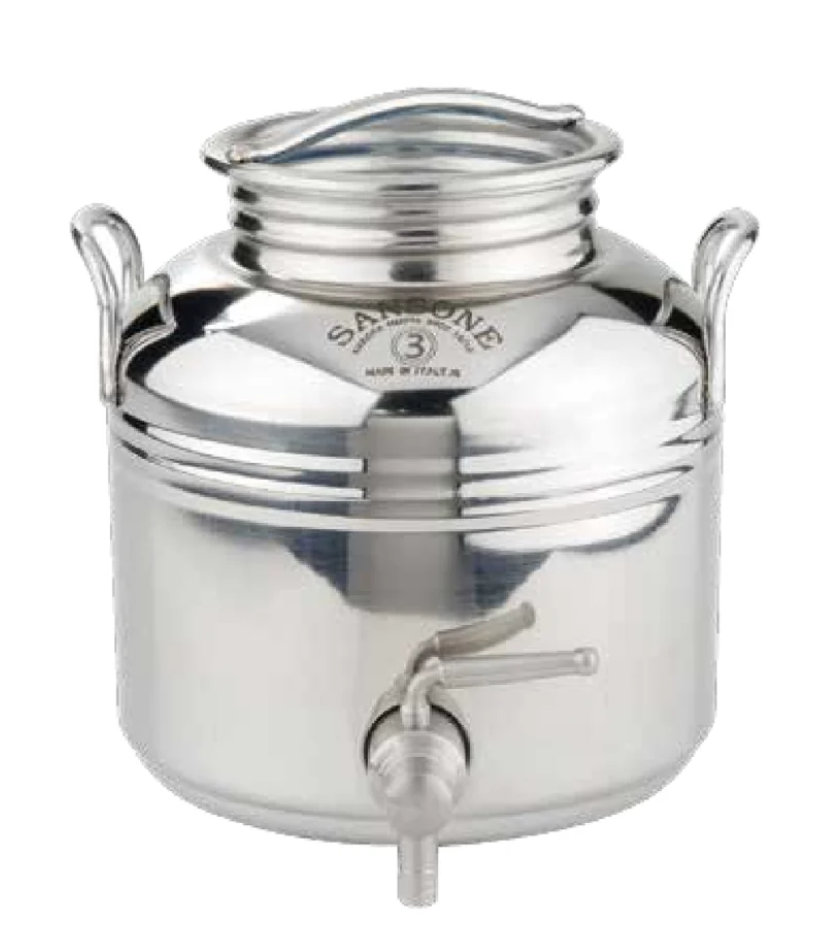 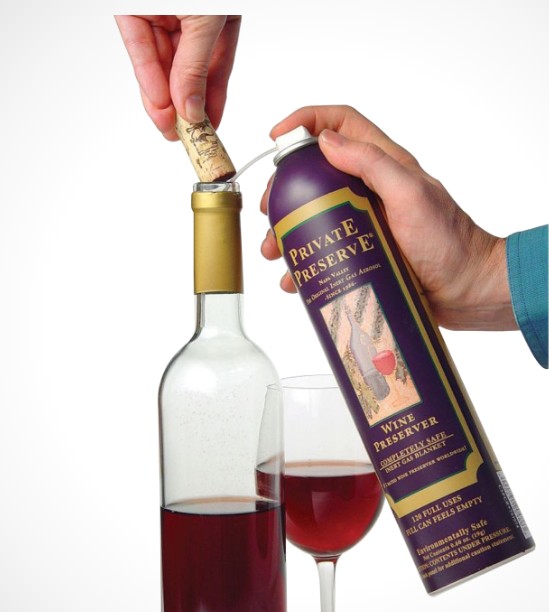
If you are using a regular bulk container, try not to open it too often. Fill a couple of bottles for day-to-day use and leave the bulk container carefully closed the rest of the time.
 3
Like
Published at 6:36 PM Comments (0)
3
Like
Published at 6:36 PM Comments (0)
Spanish Acorn Ham - Nothing beats it!
Saturday, October 14, 2023
Apart from extra virgin olive oil another of my favourites from the Spanish culinary world is cured ham, in particular, Iberian Acorn Ham (Jamon de Bellota Iberica). Which is very different from Serrano Ham or the Italian Prosciutto and is unique to Spain. It is an absolute delicacy and one of the most moreish foods you will encounter!
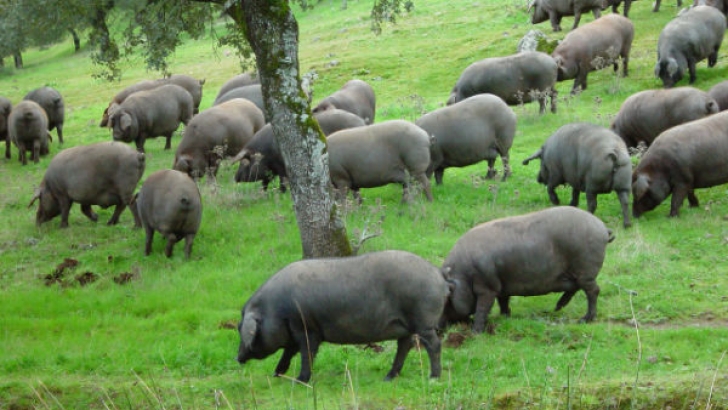
Fresh meat has been preserved throughout history and the pig has always played a particularly important role in this practice. This is partly because of its high reproductive capacity, and also due to the varying uses that can be made of its meat and the ease of storing and processing it. The great Mediterranean tradition for cured hams and cold meat products is believed to have originated with the Romans and Greeks as reflected in names such as "longaniza" (cured pork sausage) and "salchicha" (sausage) that come from the Roman lucanica and salsicius. The Mediterranean Diet is more than simply a sum of particular ingredients or recipes and makes better sense when associated with the climate, geography, customs and lifestyles in Mediterranean areas. Iberian Bellota Ham plays a key role in this kind of diet. Not only is it tasty and succulent, but it also has specific properties that make it a unique food product and thus stands out from the other cured hams available throughout the Mediterranean Basin.
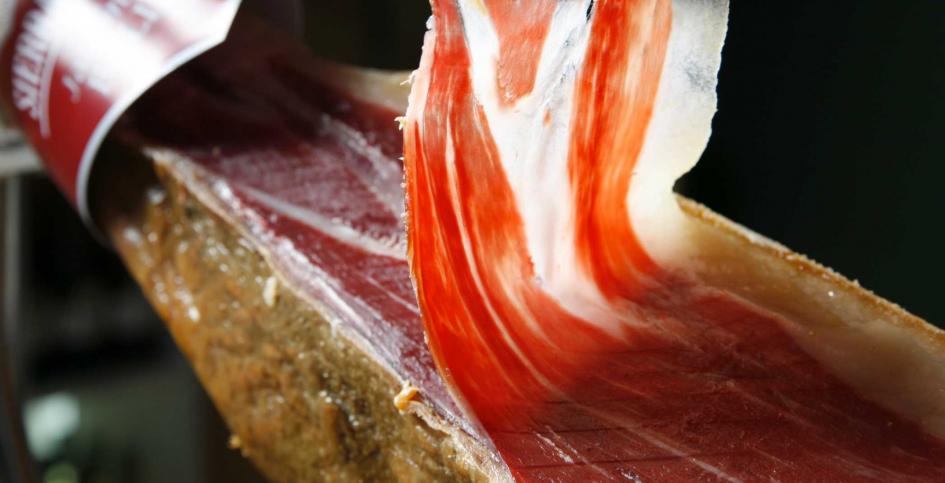
Iberian Bellota Ham is a low-calorie food, which is rich in vitamins and contains 50% more protein than fresh meat. A particularly surprising fact! Due to the natural and traditional curing process, Iberian acorn ham is a pure and aseptic food and the meat is free from any kind of manipulation. Iberian acorn ham is not just a food product, but also a delicacy with numerous other qualities. As well as being a pleasure for the palate, it also offers great health benefits. Iberian ham is full of antioxidants and is high in vitamin E. It is especially beneficial when eaten with tomatoes. Iberian bellota ham contains excellent quality fat, with increased levels of oleic acid (over 50%), as found in olive oil. This facilitates the production of HDL ("good cholesterol") in the body, while reducing LDL ("bad cholesterol"). So when you start to combine extra virgin olive oil, Bellota Ham and other ingredients you can see suddenly how the Spanish diet is in particular so healthy, take a look at my post on “Pan Catalana”, so simple yet so healthy! For these reasons moderate consumption of the product helps to maintain cholesterol levels and prevent cardiovascular diseases as with extra virgin olive oil.
It provides a generous dosage of B group vitamins, especially B1 and B2. Just 100 grams of Iberian acorn ham provides 24% of the recommended daily allowance of this vitamin. It is also rich in iron, magnesium, zinc and calcium and above all phosphorus, providing 30% of the recommended daily allowance.
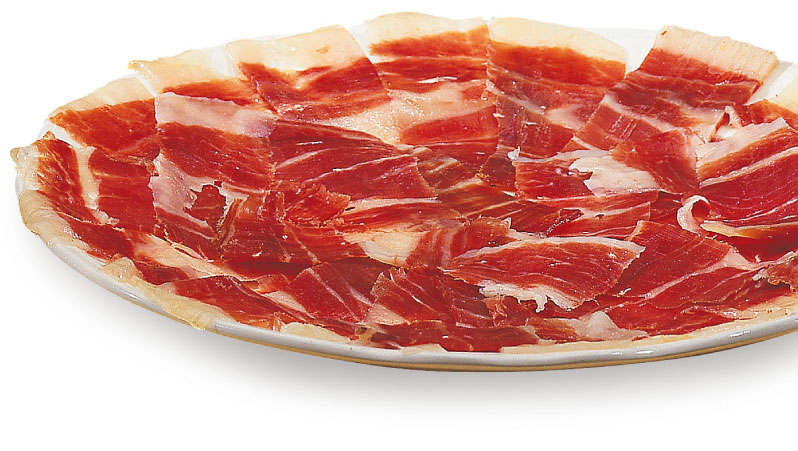
It is a recommended food for hypo-calorific diets as 50 grams of our Iberian Bellota Ham has only 150 calories. So is Iberian Bellota ham the same as Jamon de Pata Negra( black hoof ham)? And how does it differ to Serrano Ham? This term “Pata Negra” refers exclusively to races of pigs with black hoofs and does not necessarily refer to Iberian pigs or those of a specific quality as commonly thought. In fact, there are Iberian pigs with different colourings. Serrano ham comes from a white pig which is fed mainly on fodder and is cured for a period of between 7 and 16 months. Gastronomically, serrano jamón is considered inferior to Iberian ham and is dried in a cold dry climate in the hills or mountains.
And Jabugo Ham? Where does this come in? Well, it is a high-quality Iberian Ham which comes from the mountainous region of Huelva. Jabugo is the best known of the mountainous villages. The name comes from the town not the type of ham. Many think cured ham should be salty, and normally find it dry but really if it is fresh and well made it should be juicy and not salty. With regard to the firmness, the ham should be cured to an optimum point, though never too much (this point will vary depending on the part of the ham being cured). One of the differences between a serrano ham and an Iberian ham is the fluidity of the fat. An Iberian ham should always be moister than a serrano and a lot shinier. It is common to see white dots in Iberian hams that may look like imperfections in the product. However, these dots are produced by the crystallisation of the thyroxine, an amino acid derivative of the proteins that experts consider a sure mark of quality and indicative of a long and unhurried maturing process and a sign of the pig having exercised well while in the pasture, as all pigs raised for Iberian acorn ham are free range and feed on acorns.
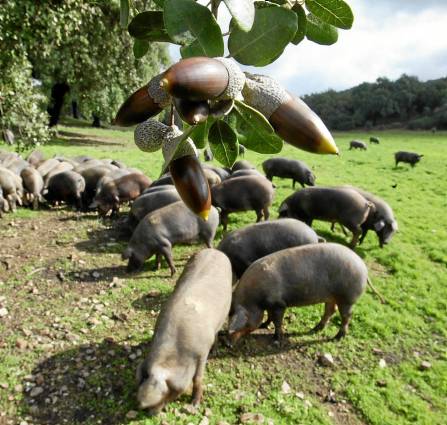
The main parts of a cured ham are the maza, the contramaza and the babilla. The maza is the part with the most meat and is the richest and most succulent. The babilla has less jamón as it is confined by the femur and coxal bone. This part is less succulent than the maza so it is recommendable to start cutting here if the cured ham is going to be consumed over a period of time. The part known as the jarrete and the caña are usually diced into cubes of cured ham as the meat has a firmer texture and a different taste. Ham must always be eaten at room temperature in order to enjoy all of its sensual nuances. If the ham has been cut and stored in the refrigerator or comes sliced in a packet, take it out of the refrigerator an hour before eating, to allow it to reach the correct temperature.
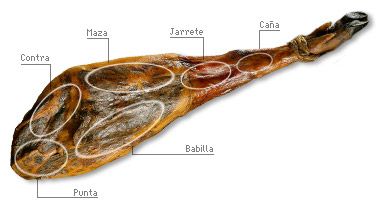
I highly recommend it, as it is a delicacy you will find hard to live without once tasted!
 3
Like
Published at 1:07 PM Comments (2)
3
Like
Published at 1:07 PM Comments (2)
Madrid-Style Brava Sauce
Saturday, October 7, 2023
 Patatas bravas is originally from Madrid, where it was created and then spread throughout the country. Now each region has made their own modifications such as in Valencia where they serve it with garlic mayonnaise and paprika pepper. But one of the most emblematic places to eat Bravas in Madrid with a traditional Brava sauce is Bar Docamar in Calle Alcalá 337. Its sauce is legendary in Madrid and a house secret. This bar goes through literally tons of potatoes every week and customers travel from all over Madrid to enjoy their Potato Bravas and buy their sauce. This classic tapas is basically potatoes cut into irregular chunks of approximately 3-4 cm, fried and dressed in a spicy sauce that is poured over them and served very hot. Patatas bravas is originally from Madrid, where it was created and then spread throughout the country. Now each region has made their own modifications such as in Valencia where they serve it with garlic mayonnaise and paprika pepper. But one of the most emblematic places to eat Bravas in Madrid with a traditional Brava sauce is Bar Docamar in Calle Alcalá 337. Its sauce is legendary in Madrid and a house secret. This bar goes through literally tons of potatoes every week and customers travel from all over Madrid to enjoy their Potato Bravas and buy their sauce. This classic tapas is basically potatoes cut into irregular chunks of approximately 3-4 cm, fried and dressed in a spicy sauce that is poured over them and served very hot.
When it comes to Patatas bravas' sauce there are two schools of thought: with tomato and without tomato. From my experience of living in Madrid and researching, I would say the more traditional Brava sauce without tomato. It is made with a base of extra virgin olive oil, sauteed onions, garlic, paprika and cayenne pepper, wheat flour and water or chicken stock. However other ingredients are used which are well-guarded secrets by each cook who adds a special something to the recipe.
In Catalonia, the sauce is made with olive oil, chilli, sweet paprika and vinegar. The important thing is that it's spicy, in fact, its name "bravas" makes allusion to this. In the Spanish language, bravo-a means brave or fierce if referring to an animal.
Patatas bravas are typically served in bars in many regions of Spain as tapas or "ración". It's considered one of the cheapest tapas due to its inexpensive ingredients. Should you ever visit Madrid, you'll absolutely have to taste patatas bravas and I highly recommend passing by Bar Docamar.
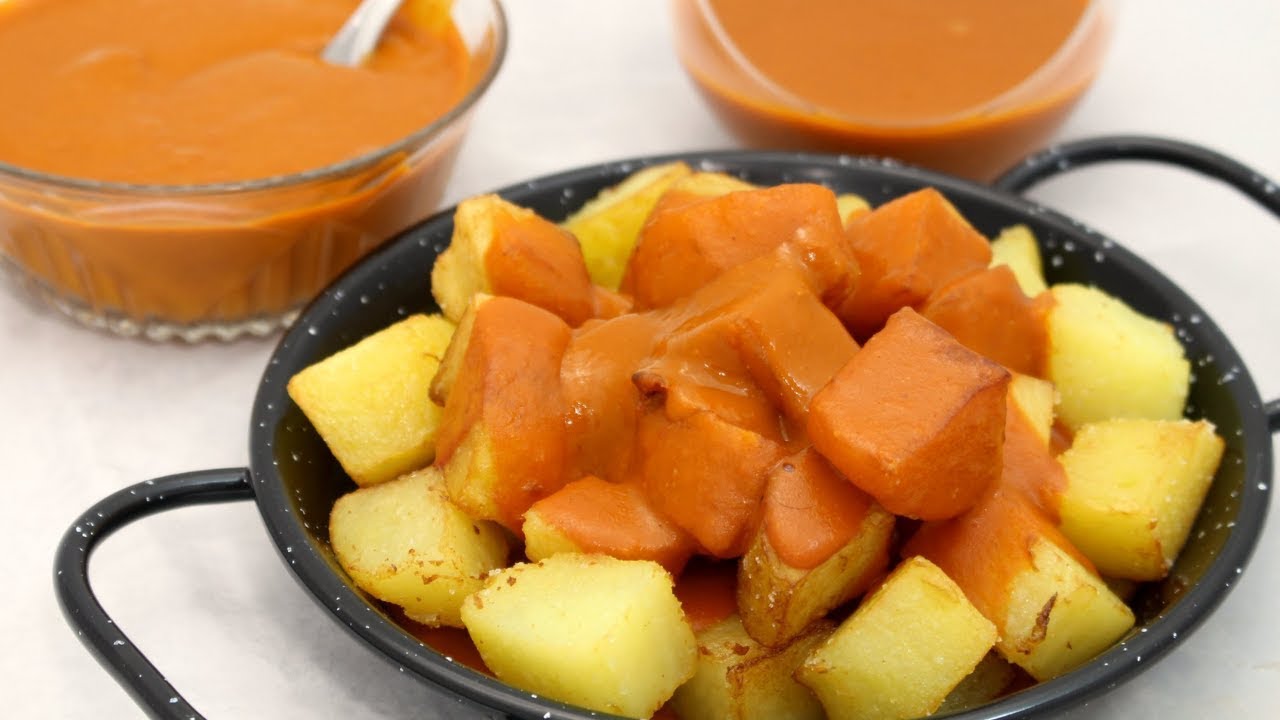
Here is my take on the 'Madrid' Patatas Bravas - Potatoes and Hot 'Brava' Sauce - Madrid Style
Ingredients - four portions:
4 large potatoes
1 large onion
3 garlic cloves
Pepper mix: 1 tsp of Paprika (normal) + 1 tsp of Paprika de la Vera (smoked) + 1 tsp of ground Cayenne pepper (hot) + 1tsp of white pepper
1,5 tbs of flour
1,5 tbs of sherry vinegar
Extra virgin olive oil
1 tsp salt
1 cup of chicken stock
Instructions:
1. Par-boil the potatoes. Cut the potatoes to size - uneven chunks of about 3 - 4 cm. Put the potatoes in a pot with water and bring to a boil. Let them cook for about 10 minutes.
2. Dice the onion into fine chunks and chop the garlic
3. Heat three tbs of extra virgin olive oil and stir-fry the onion until its transparent.
4. When the onion is ready, add the garlic. When the garlic is browned, remove from the heat and add the pepper mix. Stir well so it mixes properly and put at low heat.
5. Add the flour and stir in well for about a minute. Be careful not to burn the paprika.
6. Add the cup of chicken stock and cook for 10 minutes to make sure the flour and paprika are properly cooked.
7. Add the salt and the sherry vinegar and cook for a further 5 minutes. If it is too thick just add a little more stock or if it is too liquidy just let if reduce further and cook for a little longer. It should be thick but not too thick. The photo should give you an idea of the consistency. But then again, choose the thickness you prefer.
8. Put the sauce in the mixer and blend until there are no lumps or use a hand blender.
9. In a frying pan heat abundant extra virgin olive oil (very important) and fry the potatoes on medium heat and then raise the heat for the last 2 minutes to crisp. Once they are lightly browned put the potatoes on absorbent paper so any excess oil is drained.
10. Put the potatoes in a large bowl and pour the desired amount of sauce.
Patatas bravas are simple and cheap to make, and best of all, you can add any spice or herb to your taste, Recipes all over the country are usually modified by each cook. A popular alternative is to add freshly grated tomato instead of chicken stock and flour. They are an excellent tapas and starter to any family meal so if you are thinking of holding a party or inviting friends over for dinner, why not make these for them!
Enjoy!
 3
Like
Published at 11:52 AM Comments (1)
3
Like
Published at 11:52 AM Comments (1)
Spam post or Abuse? Please let us know
|
|